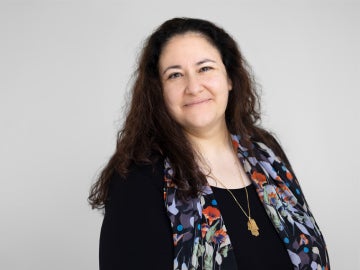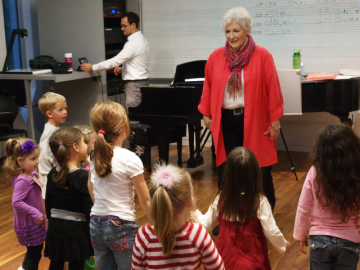Senior Symposium 2016 Preview, Part 2
April 27, 2016
Lisa Gulasy
The Office of the Dean of Arts and Sciences and the Office of the Dean of Studies invite all members of the campus and community to celebrate the academic and artistic endeavors of members of the Class of 2016 at the seventh annual Senior Symposium on Friday, April 29, 2016.
The symposium begins at 1 p.m. in King 306 with opening remarks from Tim Elgren, dean of the College of Arts and Sciences. Concurrent panels begin at 1:30, 2:45, and 4 p.m. in various rooms on the third floor of King, and a reception in the Rice/King Courtyard will begin at 5:15 p.m.
This year, more than 50 seniors and fifth-years on 17 panels will each give a 12-minute presentation regarding work they performed for honors or capstones or research they conducted individually or with a faculty mentor.
To get a sense of the rich variety of topics covered at this year’s symposium, the Source is sharing a handful of project abstracts written by presenting seniors in the days leading up to the event. Learn more about the students included in today’s batch by clicking individual photos in the gallery above.
Henry Aberle, “Breaking Down ‘Development’: A Music Theoretical Approach to Understanding Journey in Music”
Theodor Adorno once stated that the music of Stravinsky, unlike Beethoven, was flawed because it lacked thematic material. His statement points to the necessity of motivic development, which implies a logical journey through mutations of thematic material. Adorno’s harsh definition of what qualifies as a motive led me to investigate how we perceive motive and large-scale form. By synthesizing and then comparing Adorno’s conceptualization of motive with the theories of organicism and developing variation, this project aims to question a simplistic understanding of thematic composition. Theoretical analysis will include works by Beethoven, Debussy, and Schoenberg.
Rebecca Cohen, “Playing Porteno: Translating History Across Cultural Stages”
Cohen translated the new Argentine play Sintoma from Spanish to English. The work is a glimpse into the inner life of a man in his 30s struggling with an identity crisis of political and cultural proportions. With a past drenched in the horrific deeds of the last military dictatorship in Argentina, the protagonist, Leonardo, plays psychological games with his therapist as he circles around the unspoken truth that will alter his reality and implicate everyone he holds dear. In addition to translating the work, Cohen is writing a 30-page explication of the historical context, translation, and performance theory underlying the project and its impending staged reading in mid-April.
Robert Dorward, “Exact Pattern Containment in Restricted Growth Functions”
In the mathematical field of enumerative combinatorics, we study the number of ways a pattern can emerge given certain constraints. In his research Dorward examines the ways that a mathematical object called a “restricted growth function” (RGF) can be contained in another RGF and the distribution of certain “combinatorial statistics” on sets of RGF’s containing others. Dorward finds connections to many famous combinatorial objects such as set partitions, integer partitions, Fibonacci numbers, Pascal’s triangle, Catalan numbers, and more.
Flora Hollifield, “Post-structural sounds: Listening to the Relationship Between Post-structuralism and Music in Debussy, Mann, and Joyce”
Western thought has long been troubled by the metaphysical and semantic problems of music. Unable to satisfyingly rationalize sound, philosophers and theorists of the Symbolist movement at the end of the 19th century constructed the myth of music as the ideal art for its intangibility. This project works to deconstruct this myth through the application of post-structural theory to the music of Debussy. It is the metaphysical multiplicity of a musical note in Debussy that leads to an understanding of the symbiotic relationship of music in literature, which Hollifield explores through the literary examples of Thomas Mann’s Doktor Faustus and James Joyce’s Finnegans Wake.
William Lynch, “Analyzing Hunch-based Decision-making”
Often, individuals make decisions simply due to “hunches” and seemingly independent of previous information. However, it is possible that these hunches are more informed by previous information than expected. Lynch hypothesized that in instances where prior information strongly predicted subsequent choices, the person would be more likely to form a hunch. He used a computerized task in which individuals predicted which marble would be drawn from a bag and determined whether they would “wager” on their choice to indicate a hunch. He evaluated both basic predictors and more complex decision-making strategies and evaluated whether they predicted subsequent wagers.
James Quintana, “Dimension to Virtual Reality: Ear-eye Coordination with Frequency-responsive Beam Tracing”
Quintana’s project presents elaborations upon the acoustical beam tracing algorithm. Beam tracing for audio approximates reverberation filters present in physical architectural scenes by analyzing digital models of those scenes to compose the impulse responses of those filters. The algorithm as originally presented takes into account some of the acoustic absorption properties of the materials making up the scene. However, it has been previously assumed that each surface that reflects or transmits sound does so at an even distribution across the space of audible frequencies. Quintana describes a method for incorporating non-flat frequency responses of surfaces, which resolves this shortcoming.
Amy Wedel, “Vaping to Lose Weight: Predictors of Adult E-cigarette Use for Weight Management”
Prior research indicates that a subset of traditional cigarette smokers is motivated to smoke for weight-related reasons (i.e., to lose or maintain weight). This study evaluates whether a similar relationship can be observed between vaping and weight concerns in adult e-cigarette users. The study also identifies predictors of vaping for weight management from the following factors: age, sex, race, flavor preferences, number of diet attempts, and eating pathology.
You may also like…
Remembering Former Visiting Assistant Professor Leila Ben-Nasr
Leila Ben-Nasr, a former visiting assistant professor of comparative American studies, died on November 28, 2025.
Oberlin Community Remembers a Beloved Retired Professor
A member of Oberlin faculty for 13 years, Peggy Bennett was known by students and the Oberlin community for creating and leading MusicPlay, a preschool classroom and learning lab run as part of the...
Eric Rooks Named Director of Campus Safety at Oberlin
Longtime public servant emphasizes collaborative partnerships and kindness.


